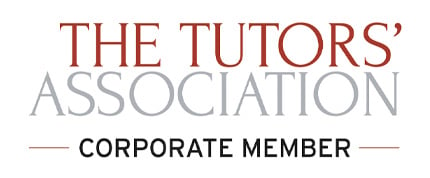My specialist experience working with young people with SEN to develop their engagement, trust and interest in learning;
As an educator who has had experience in Secondary Education, FE and HE I have been used to accommodating and making provision for SEN pupils and students and working with support staff to ensure that these students have the provision they need to maximize their own potentials and develop and engage in subjects and learning. I have taught a variety of students over this period, who are all very individual and need a tailored approach and consideration for their capabilities, interests, personalities and SEN. I always like to start with very soft skills introductions and use this opportunity to discover the student’s interests, prior knowledge, skillset, ability level, want, needs and aims, so that I can gauge from what and how they would most benefit from my expertise. Though I always plan and structure each session according to the all the individual factors, I am very aware the need to keep this very flexible and adaptable in order to meet the needs of the moment, the student, and the ever-changeable elements of the session, day or the longer program.
- My experience working with autistic young people;
During the last 4 years of my teaching practice however, I have specifically taught autistic students on a 1 to 1 basis. This period has been the most rewarding of my teaching profession to date and I feel I have learned much myself with regard to Autism, ADHD, PDA and SEMH and developing strategies that make for conducive learning environments and fun and interesting creative projects which help students relax, focus, engage and enjoy learning in and of itself.
I have taught students with autism and SEN to various levels during the last 4 years. Each has been very individual, have their own specific needs and aims and I have adapted the subject matter, levels and delivery style accordingly for each.
Obviously, the level of individual ability and experience regarding their creative practice and understanding of subject differs for each student and so pace and ‘over the shoulder’ support needs to be ascertained early on so that the student feels independent enough n their work, but supported, inspired and guided throughout. This is crucial for the student to keep interest and engagement while also developing confidence and independence.
- My experience working with young people with PDA;
Regarding the students with PDA, I always use strategies to avoid conflict and bring instruction or direction in gently and ‘softly’, often talking around the creative ideas and learning and allowing the student to absorb possibilities, discuss options and even suggest the way forward themselves. Patience is key and planning and routine help with the calmness of sessions and I usually try to have visual guides to our aims, goals and sessions on the wall, printed and at hand or available to be referenced on screen. Monitoring the student and pupil is important to constantly reassess if the session’s demands need to be adjusted or scaled back. Often, I will have background music playing of the students choosing to help create a relaxing space. Avoiding direct instruction and using more indirect phrases can help avoid conflict situations and giving choices allows the sense of creative ownership for the student.
- My experience working with young people with ADHD;
Regarding the students with ADHD, I use a personalized response the student for each session to accommodate how the student is feeling and acting. I find having a structure to work towards is useful but with the ability to be flexible depending on the needs of the moment and the student. Structured lesson plans are useful to offer routine and an overarching curriculum with previews of the work we will be undertaking. Reminders of aims and goals help students and repeating instructions and targets and using visual guides for this works well too to support the students. Variety and short sections help but with the flexibility to continue on work that the student has become engaged with. In session I use frequent breaks, background music that is student led and suitable, reviews and praise and encouragement and discussion.
- My experience working with young people anxiety;
In the sessions I run, we always strive to break the time into manageable blocks and always with the proviso that if the pace is too much or concentration is lapsing, we can break, change focus, rest or even go outside, talk or just have some downtime. The sessions need to be fun and enjoyable. This is key. Finding a topic or subject that the student/pupil is interested in as a project’s focus is a great way to motivate learning and keep attention and enthusiasm, though this ‘focus’ still needs to be able to adapt and change as necessary.
- Social skills/social interaction/friendship skills;
During my sessions with my students I have encouraged collaborative working with other students and socializing during break times. This has included myself and other tutors escorting students over lunch break where they have socialised and developed friendships with peers as well as us all enjoying dialogue, conversation and discussion including likes, interests and more general topics. We also encouraged the development of basic practical social skills such as ordering food and drinks, payment and supervised this as the students became more confident and independent.
Many of the strategies included above form routine parts in my sessions when I teach pupils/students how to animate, design and create digital content, images, digital games and animation. There are various cross-over strategies used and applied, but each student is individual and the sessions are always about working specifically to the needs of the student with the goal of building their confidence, social abilities and specific subject related skills and knowledge while encouraging their interests. Holistically this works towards helping them to become creative, happy, confident and positive individuals.
Currently one of my main students, who I have been teaching digital skills to for 4 years now, has been nominated for the prestigious Anna Kennedy Autism Hero Awards, which I see as a mark of how inclusive education, patience, space and a passion for creative digital design can elevate any student and their sense of self-worth.









